D16 Group Phoscyon 2 Acid Line review: Turn on, tune in and tweak out
D16 Group has injected its TB-303 emulator with even more lysergic goodness for an almost perfect acid experience.
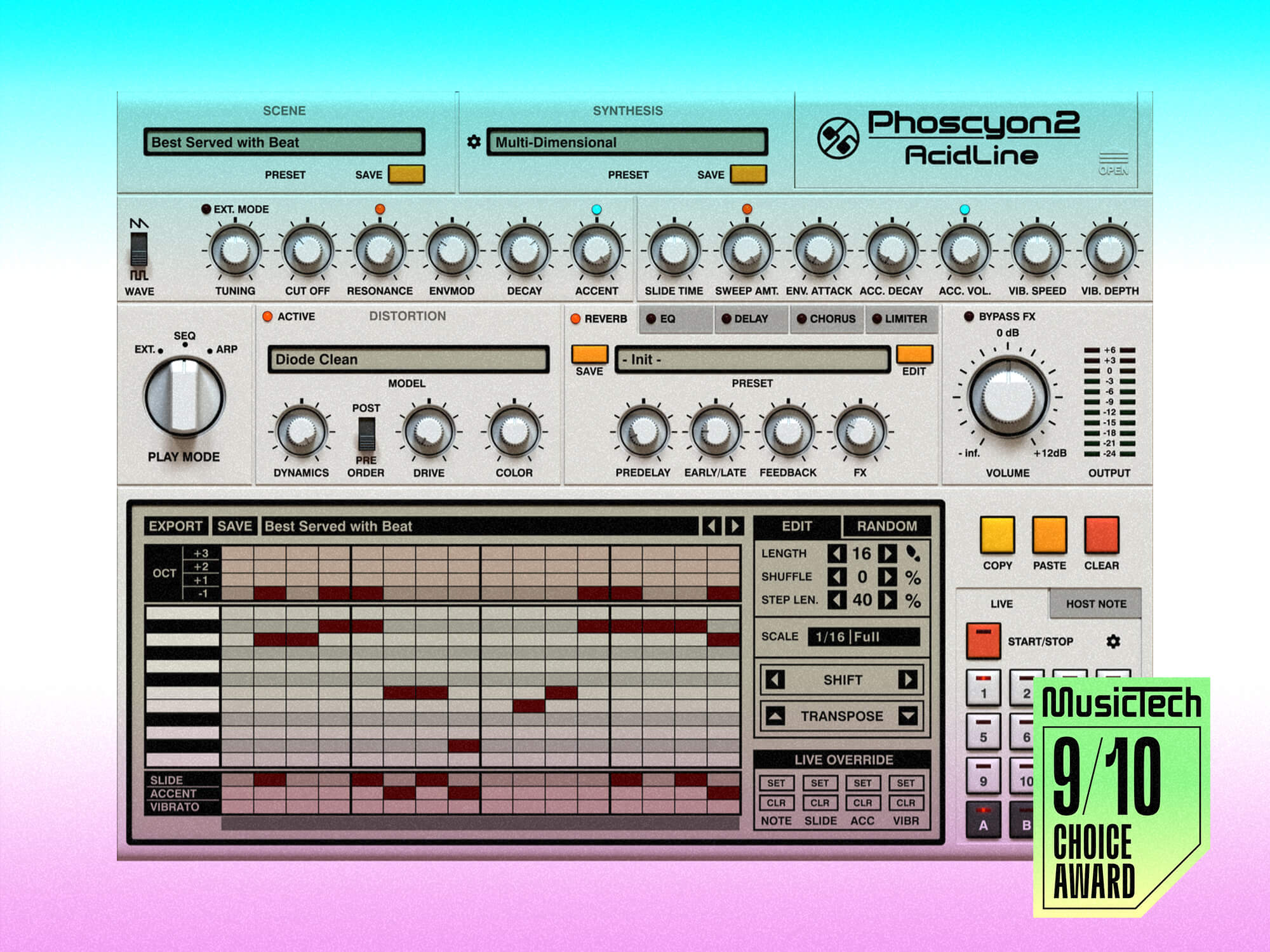
Image: D16 Group
Review Overview
Our rating
9
Our verdict
⊕ Plenty of extra features for expanded acid synthesis
⊕ Excellent and deep effects
⊕ Intuitive sequencer and arpeggiator
⊕ Robust preset management
⊖ Distortion is fixed in the effect signal chain
Roland’s TB-303 bassline synthesizer has had a remarkable life. Released in 1982 as a bass synth to accompany practicing musicians, it soon disappeared from shelves due to lack of interest. That interest would be rekindled by the end of the decade after Chicago house producers discovered it could make the most wonderful and psychedelic noises. Love for the little silver box has only grown over the years, with a number of emulations – both hardware and software – slaking the thirst to replace an ever-dwindling supply of originals.
- READ MORE: Native Instruments Komplete 14 review: A mighty collection of musical tools for the modern producer
D16 Group’s Phoscyon was one such software emulation, first appearing in 2007 and now upgraded to version two. The new iteration has kept the design and concept but boasts a thorough overhaul, with everything from the sound to the sequencer benefitting. Phoscyon has always been a fun little synth but the update elevates it to must-have status, thanks to the many improvements both under and over the hood.
At first blush, Phoscyon 2 is starkly similar to version one. The screen is divided into two halves, with the top, or Sound Control, handling audio controls and effects, and the bottom, or Internal Sequencer, doing as you’d expect. With so many changes in each area though, it’s best to go over everything rather than just focus on what’s new. Indeed, the new features are so integral to the use of the soft synth, particularly in the sequencer section, that it’s best to think of it as an entirely new plugin.
As before, the top is dominated by a row of knobs, with those corresponding to the original hardware – the familiar tuning, cutoff, resonance, envelope modulation, decay and accent pots – on the left, with seven additional knobs inspired by famous 303 mods on the right. Some have been carried over from version one, like slide time, but there are many new ones, including vibrato – an entirely new function based on a programming trick of alternating notes. Organising knobs this way makes more sense than the mixed-up original and is especially helpful for anyone who’s used to the actual hardware.
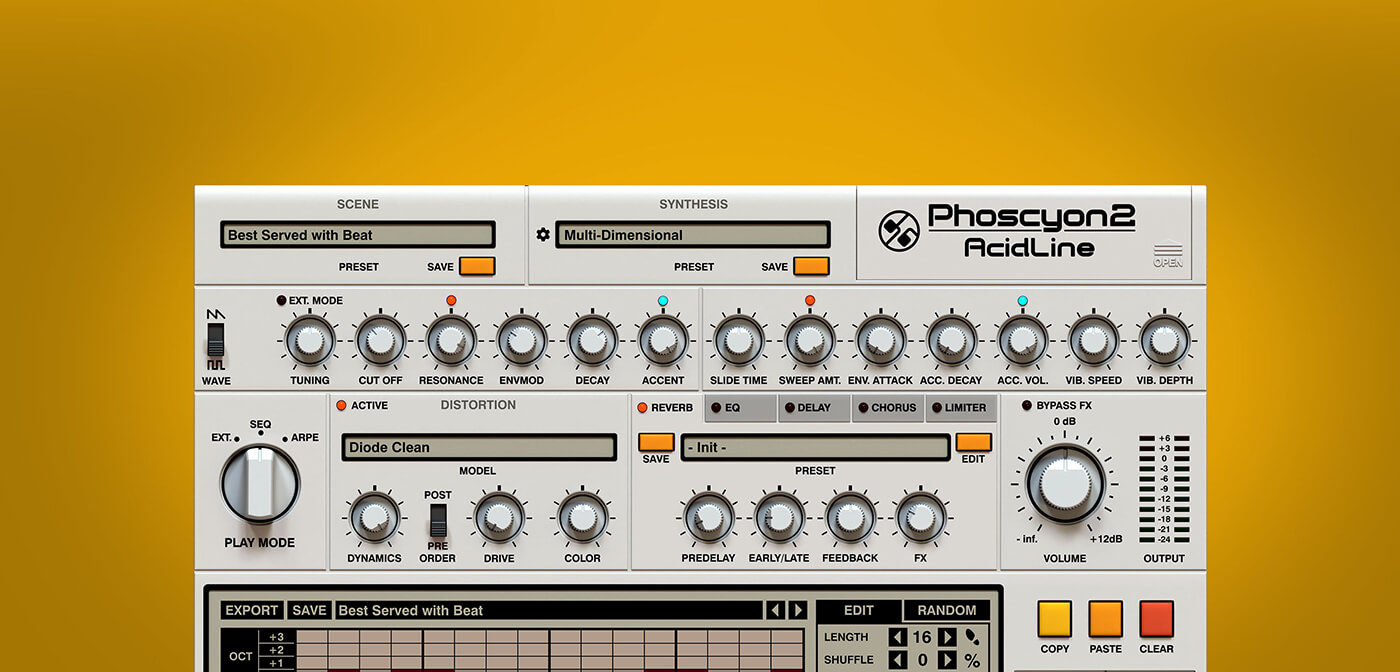
For further tweaking, open the new Calibration Parameters panel in the upper right to reveal the under-the-hood controls that service techs use to fine tune things like the base cutoff frequency and VCA clicks. It can be hard to hear exactly what’s happening on some of the controls but it’s nice to have them there.
Below the knobs is the vastly expanded effects section. Distortion is back but with a whopping 19 algorithms. These range from subtle saturation to raging Rat pedal nastiness and can go a long way in transforming your sound. Supplementing this is a comprehensive and entirely new multi-effects section, with swappable EQ, limiter, delay, reverb and chorus modules. Each effect has a number of deep editing parameters, making this an extremely useful sound-shaping toolbox. We would have liked to be able to change the distortion’s position in the signal chain but it does make sense to have it first.
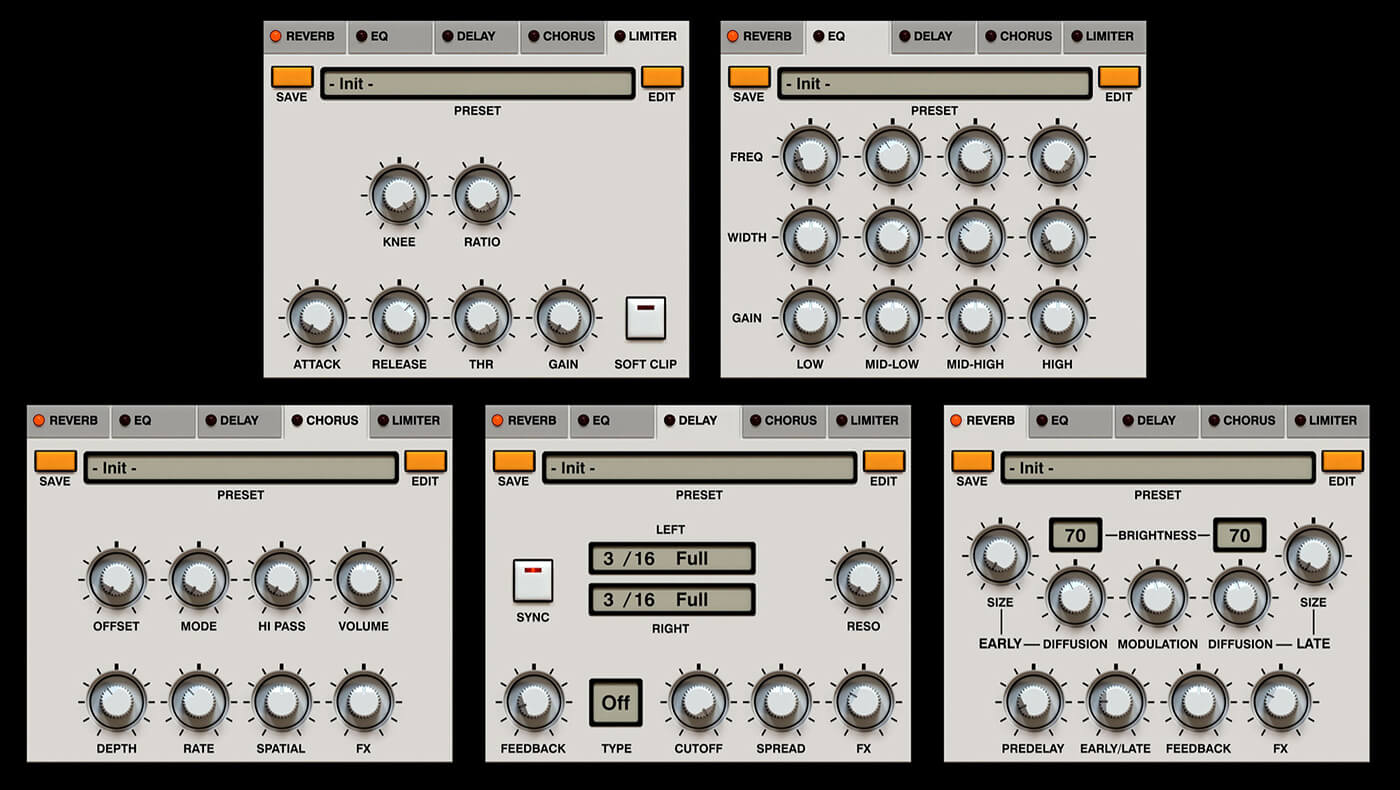
Phosycon 2’s sound is gorgeous. D16 Group claims to have completely rewritten the code with a brand-new emulation, and it shows. The oscillator waves behave as they’re supposed to, with the sawtooth buzzy and the square suitably full and bouncy. The filter chirps as you want it to, and the extras seriously expand the sound-shaping possibilities. The effects are particularly well-matched to the sound, as well.
Anyone who’s used an original 303 would never describe it as ‘intuitive.’ Although not as obscure as Roland’s hardware, the original Phoscyon suffered from a sequencer that was perhaps too close to the original. Thankfully, version two includes a graphic 64-step sequencer mode that makes inputting notes, slides, and accents a complete breeze. Extras like transpose and shift for moving the whole sequence over a step are superb for coming up with unusual basslines, which is part of the fun of a 303.
If you want to go full-on Chicago acid house, make use of the well-stocked random section to add variation. D16 Group has also left the original key mode intact for hardcore purists. You can even have Phoscyon 2 control other instruments with the sequencer or export sequences as MIDI information to use on other DAW tracks. The Arpeggiator is greatly expanded and now has a graphic mode as.
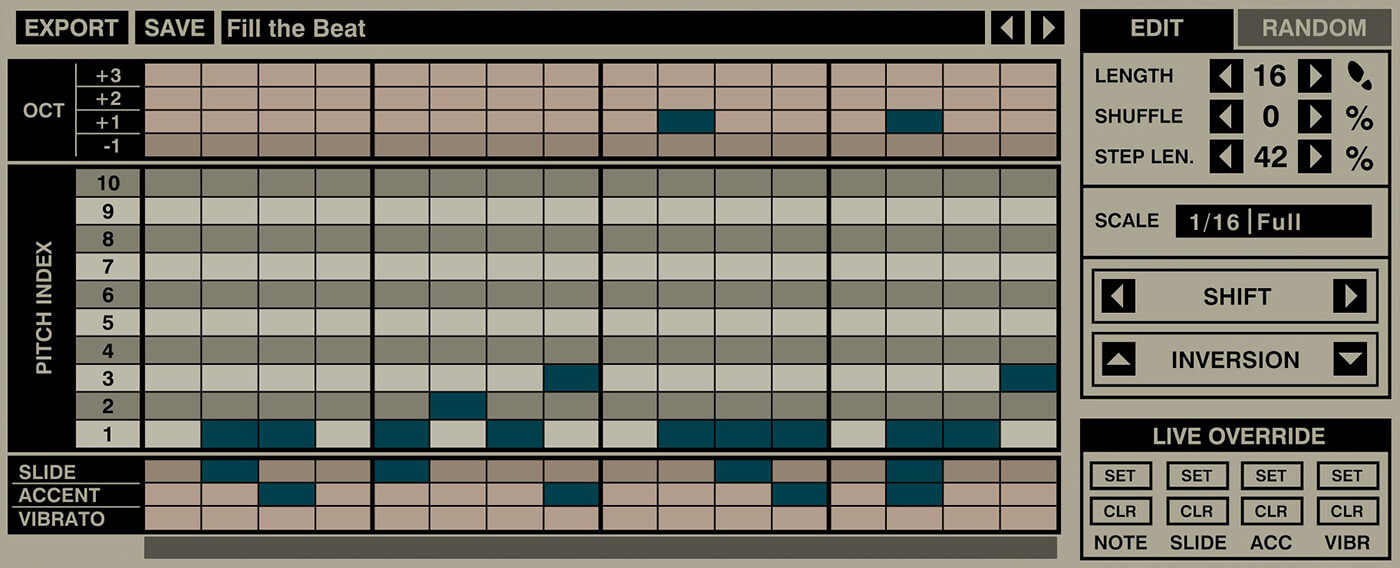
Ease of use seems to have been a priority throughout. The pattern trigger section, which was always a little hard to understand in the original Phosycon, is much improved, with both MIDI note and in-GUI triggering, the latter of which will appeal to users who want to jam with a MIDI controller. Presets have been buffed up as well, with not just synthesis and sequencer preset sections but entire scenes plus effects and even the calibration knob settings savable.
Put this all together – the variety of tweakable parameters, the easy-to-use sequencer and arpeggiator, the improved sound – and you have yourself a 303 emulation that is more fun than a roomful of wide-eyed ravers in 1988. Is it the last 303 as D16 Group claims? Owners of the first Phoscyon will definitely want to take advantage of the upgrade offer. Those with a competitor’s acid plugin may find it difficult to justify spending the money, though. Despite the extras, it still does essentially the same thing. At the risk of sounding sacrilegious, might we suggest even more additions for a future update like a second oscillator or even polyphony? It worked for D16’s LuSH-101.
If your arsenal is missing a 303 emulation, Phosycon 2 is essential.
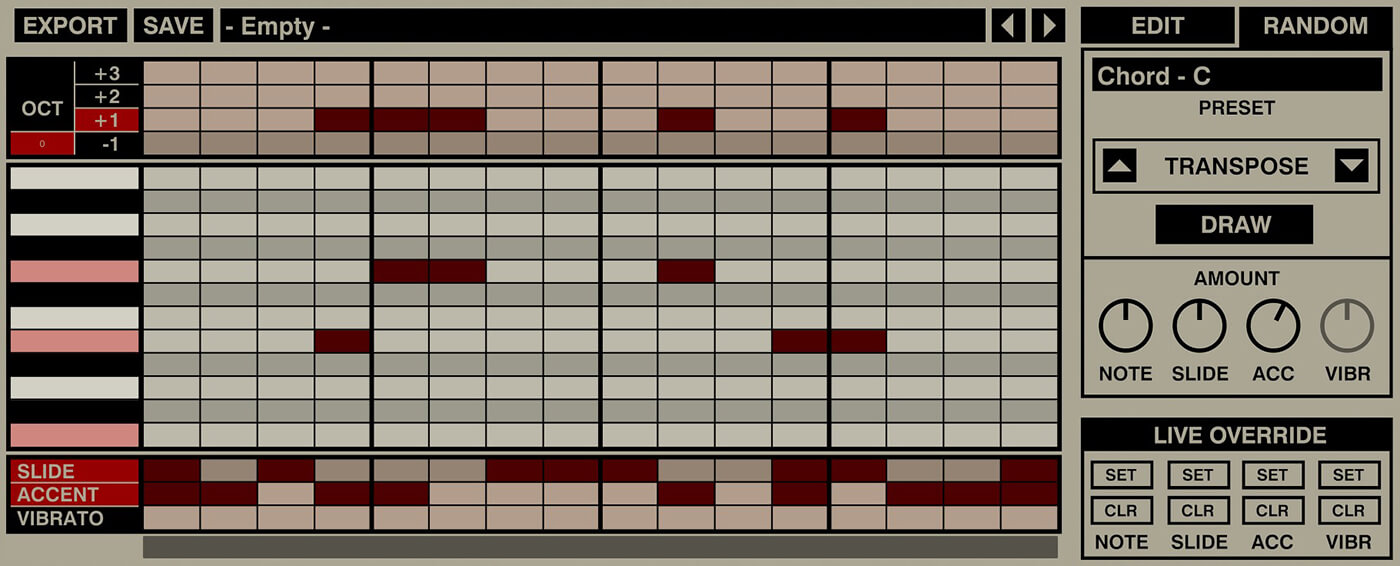
Key Features
- TB-303 emulation
- Improved audio emulation from version one
- Hardware-accurate control parameters
- Expanded controls from famous mods
- Unique vibrato function
- Fine-tune with Calibration Parameters
- Improved distortion section with 19 algorithms
- Swappable multi-effects section
- Graphic 64-step sequencer
- Sequencer randomizer
- Drag and drop pattern export
- Graphic arpeggiator
- Intuitive pattern trigger modes
- 800+ presets
- VST/VST3/AU/AAX
- macOS 10.13+, Windows 7+
- € 119 (upgrade €29)
- Contact D16 Group
- Buy: D16 Group